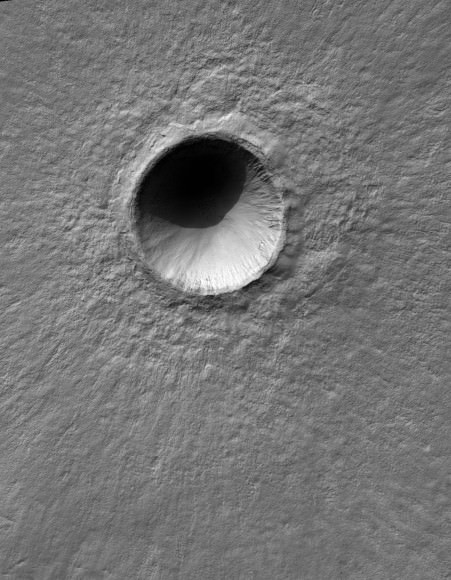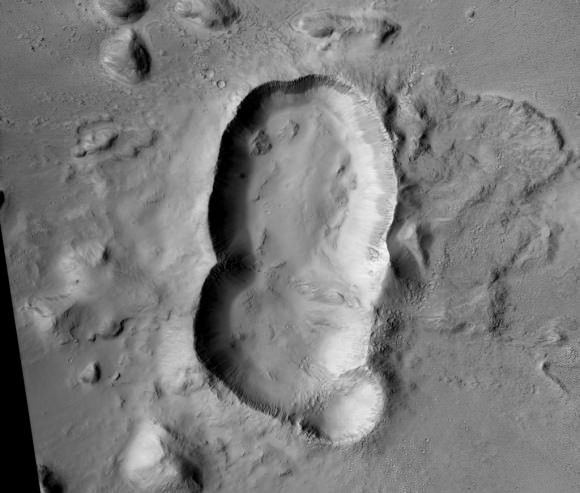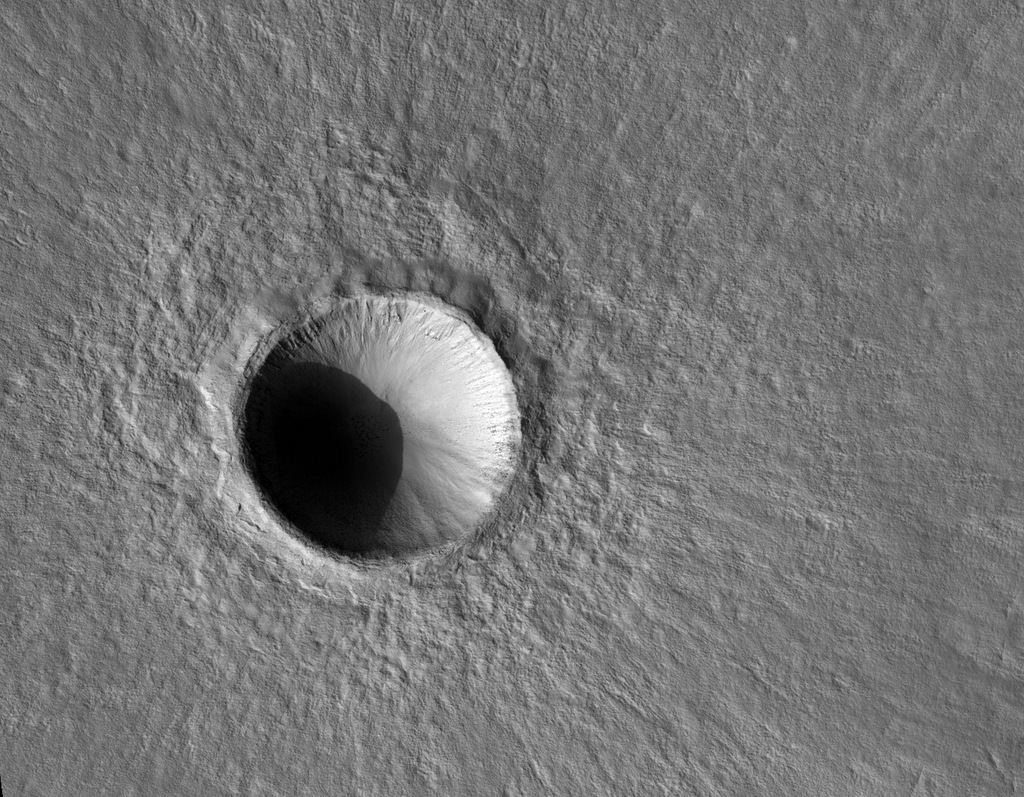Yesterday, we posted an image taken by the HiRISE camera on the Mars Reconnaissance Orbiter (MRO) of an unusual crater formed by a triple-asteroid. We noticed some comments on the article and on social media of people who said, “hey, that looks like a mountain, not a crater!”
Thanks to our brains, this is a common illusion! Depending on the angle of the Sun when the picture was taken, images of craters taken from overhead (i.e. from orbit) may appear to be a mountain. Here on Earth, we’re used to seeing sunlight coming from overhead, and our brain interprets what we see with the assumption that the sunlight *must* always come from above. Satellite photos of terrain, however usually only show shadows when the light source is nearly horizontal with the surface.
There’s an easy fix for this illusion: flip the image over so it appears the sunlight is coming from above. We’ve done that for you, below:

Dr. Richard Barrans from Newman University in Kansas explains this crater/mountain illusion:
When a crater is illuminated from above, the shadow inside the crater is near the top and the bright part is near the bottom. A mountain shows exactly the opposite lighting pattern: bright at the top and shadowed at the bottom. This is because the part of the crater or mountain that is most perpendicular to the incoming light reflects it the best. Anyway, your brain interprets pictures under the assumption that the light is from the top of the scene. So if a picture shows an object that is bright at the top and dark at the bottom, it interprets it as a mound lit from above, not as a crater lit from below.
We do know that any photo of anything that is concave or convex will flip in its appearance if the photo is turned upside down. Take a look at any of these crater images from HiRISE, and you’ll likely be deceived on most of them! (remember, they are ALL craters!)
And here’s the image from yesterday:

You can now amaze your friends. You’re welcome.


Like I said in the previous thread, for me it depends on where the nearest light source is. Put my desk lamp on the same side as the bright side of the picture and it’s a hill. Put it on the other side and it’s a crater.
Its a nearly perfect crater but as an optical illusion it looks also like a mountain 🙂
In my experience, it doesn’t depend on the light source either in the picture or in the room, it can randomly flip between mountain and crater, sometimes at will but not always (I’m often stuck with the wrong version 😉 and for some pictures it’s pretty hard to decide which is the correct perception!
An un-naturally formed mountain; too cicurular for my taste. There are also the signs of rays of ejecta. And truth be told, flipping the picture made it look more like a protuberance. Maybe I spend too much time looking at astronomical pictures than the real world. 😉
A bit like beer goggles and that certain light . . . . !
After 5 pints of Guiness who cares if its a crater or a mountain 🙂
Lots of these give me troubles; the triple crater one didn’t. The shadows on the left side are the key. If I try, I can almost imagine them being the shadowed side of a mountain, except the shadow doesn’t project on to the plain beyond it. If it is the shadowed interior of the crater, it makes much more sense.
Eeyeah.. I’ve spent hours pouring over crater images identifying features. I noticed that when I get tired the craters invert and look like mounds or mountains. AT times like this I have a hard time “re-converting’ or flipping them back over without taking a break… a 10 minute walk outdoors helps.